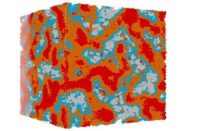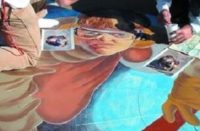T.B. Penick & Sons Inc. is known as an innovator in design-build contracting, structural concrete and decorative concrete concepts. The company is also an innovator when it comes to the safety training and risk management techniques associated with construction.
Decorative concrete is a highly specialized form of construction. The product itself is unique, the tools, materials and construction methodologies employed are specialized, and the people who produce construction art are creative, dedicated artisans. That’s in part why decorative concrete, creative design and architectural art call for unique safety training methods and safety solutions.
Safety for artisans who work in the concrete medium is just as critical as it is for laborers who work on scaffolds hundreds of feet above the ground. But the challenges in this area of construction are different. For one thing, you can see from afar whether a guy on a scaffold is following safety procedures. But when it’s a matter of analyzing the air quality for a worker breathing chemical vapors, the safety situation is more complicated. This evolving niche area of construction calls for flexibility and innovation on the part of safety professionals as well as understanding and respect for the workers, the work being done and the creative process.
Communicating with artisans
Effective communication is a key to success. Unlike jobs that are driven mainly by plans and specifications, decorative concrete projects are original and inventive endeavors. Communicating successfully with artisans calls for an understanding of and respect for this creative process.
The fact is that a lengthy, elaborate OSHA (Occupational Safety and Health Administration) training course may be a wasted effort if the training is not appropriately geared to the artisans’ learning styles, their perceptions, and the specific risks that they are likely to encounter.
Decorative concrete work can involve potentially serious health issues for artisans as well as other workers in the near vicinity. Safety training needs to focus on the special chemicals, materials and tools used by these crews. On the other hand, reciting chapter and verse of the OSHA safety manual is rarely an effective training technique for creative minds. Indeed, this type of training may leave learners with the impression that traditional safety policies and procedures are irrelevant to the work they do and therefore shouldn’t apply to them.
A better approach is to facilitate a learning environment in which learners solve problems that foster understanding of safety regulations and company policies. In this way, safety solutions are generated through a creative process and learners “own” the solutions. For example, seeing the consequences of not labeling chemicals or wearing personal protective equipment as required by OSHA allows a group to work backwards and get to the rationale and the necessity of those safety requirements.
The result is that artisans become more willing to adopt safety policies and integrate them into their creative processes on the job, and a culture of safety develops. This does not happen overnight, however, and it requires sustained follow-through, a strong commitment from management, and acceptance from the artisans themselves.
Unique safety considerations
The world of decorative concrete is exciting and ever-changing. New types of aggregate and novel techniques and methods produce striking new artistic outcomes. Newer, faster, sharper and more precise tools are being introduced into the workplace virtually every day for working cementicious products. Innovative chemicals and chemical combinations are also being developed. Safety methods must be flexible to keep up with the evolving state of the art. Artisans often view the OSHA requirements for chemical safety as onerous and stifling. They may yearn for the creative freedom associated with the artist who paints on canvas and transforms himself into a colorful painted canvas in the process. However, artisans are also generally people who value their health and desire a healthy lifestyle. The image of a concrete artisan with acid and fine powder release agents on his shirt, pants and face is not so romantic or appealing to them.
Integrating safety into production
So how does a construction safety professional instill respect for OSHA policy and foster a culture of safety among artisans? Monitoring and consistent enforcement of safety regulations is crucial, of course. It is also imperative to get leaders in the field to buy in. Also, make sure all artisans understand that their compensation is tied to a safe outcome as well as a successful project.
Another approach is to use research and development to integrate safety into production. On a recent job in San Diego, some Penick crew members were required to wear heavy respirators all day while working with acid-based products. They were hot, uncomfortable and miserable. The company’s R&D team found a way to reduce the vaporization of the acid-based products when reacting with concrete by altering the solutions used. An industrial hygienist was brought in to monitor the process and take air samples to measure potential exposure above OSHA’s permissible exposure limit (PEL). The process was modified to bring exposures well below the OSHA PEL level, so the artisans were no longer required to wear respirators to perform the applications. This solution engendered a level of respect for integrating safety into production far beyond what any classroom training could have done.
In addition to the situation involving acid vapor exposure, we at Penick have developed innovative safety solutions to mitigate risks associated with aggregate dust concentration levels, chemical use, lifting and moving aggregate and other heavy materials, and concrete curing problems that are specific to the slow pours of decorative concrete applications. Today, artisans at our job sites communicate regularly with the safety department, reach out to safety personnel for solutions, and greet safety inspectors on-site with confidence and enthusiasm, eager to show off their work and confident that safety is part of their creative process.
T.B. Penick’s decorative concrete artisans have come to realize that while safety department personnel will quickly discipline for infractions such as not wearing safety glasses, they will just as readily help them solve real-world problems so they can achieve their artistic goals safely.
www.tbpenick.com
















